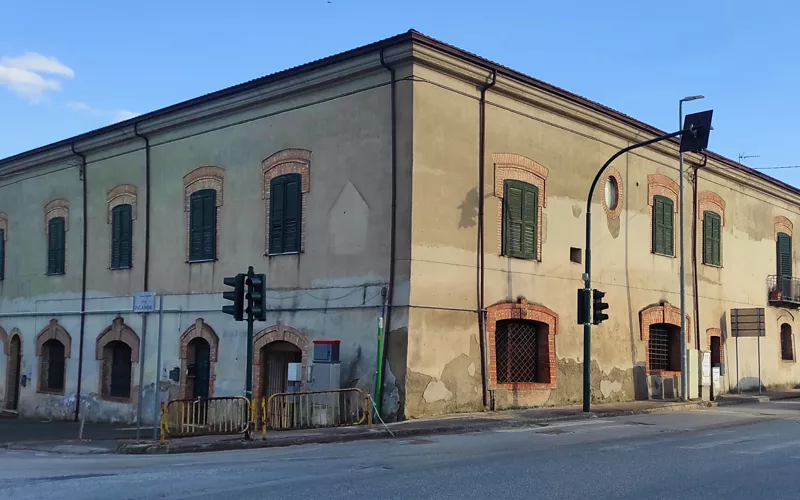This content was automatically translated. View the original text.


Overview
This is the story of an ancient workshop located on the eastern outskirts of the city of Avellino that has a long, fascinating history. Passing from owner to owner, it finally reached the Mastroberardino family who witnessed its last transformation into historical wine cellars, in an area of oenological excellence. The building is a rare jewel of 18th-century industrial architecture. This attractive and magical place is made of tufa shapes in a sequence of solids and void spaces, creating unusual perspectives between covered and uncovered spaces.
It’s located on via Pianodardine in Avellino, at the junction of the road to Atripalda. One of its façades overlooks via Filande, a place name that recalls its productive origins as a wool workshop, initially owned by the Caracciolo Princes of the Caracciolo-Rossi branch. Since 1581, the Caracciolo were the feudal lords of large estates occupying a large part of the province of Irpinia, the then Principato Ultra, a lordship that lasted until 1806.
From the 17th century, the Caracciolo promoted the industrial development of the fiefdom, forging a territorial and economic identity. They exploited the hydroelectric power of the waterways to irrigate the fields but above all for new industries including mills, ironwork, woolwork and pressing machines.
Along the river facing the factory, a textile business arose. It was a water-powered spinning mill primarily for the production of cloth for the Bourbon army’s military uniforms. As recorded in the Napoleonic land registers of 1809-1810, after a few decades of start-up and intensive exploitation, Francesco Caracciolo leased the old spinning mill of Pianodardine. In 1852, it passed to his brother-in-law Leopoldo de La Tour en Voivre and the marquise Giustina Caracciolo. It was a farmhouse with four rooms on the ground floor and four rooms on the first floor, described as a flax and hemp mill, transformed for residential use and extended to 14 residential rooms on the first floor and 10 work rooms on the ground floor.
Leopoldo de La Tour died in 1906, and his children Leopoldo Francesco, Maria and Marino inherited the property, an adjoining industrial shed and a building used as a Royal Carabinieri barracks. The heirs of La Tour then sold the property to the brothers Angelo and Michele Mastroberardino, sons of the knight Angelo, who had already leased it for many years to produce wine. The Mastroberardino cellars were born in 1878, and they were initially located in the old workshop under the name A.MA. (the initials of Angelo Mastroberardino) until December 1965.
Known for its close relationships with foreign countries, the winery also distinguished itself for its use of the most modern transport systems at the time (rail and cargo ship). In today’s Cantine Storiche, you can see traces of the track used by the wagon that transported grapes and wine to the nearby railway station. The workshop has retained its original vocation to wine-making over the years, becoming the leased premises of other wineries until July 2021.
Via Pianodardine, 83100 Avellino AV, Italia